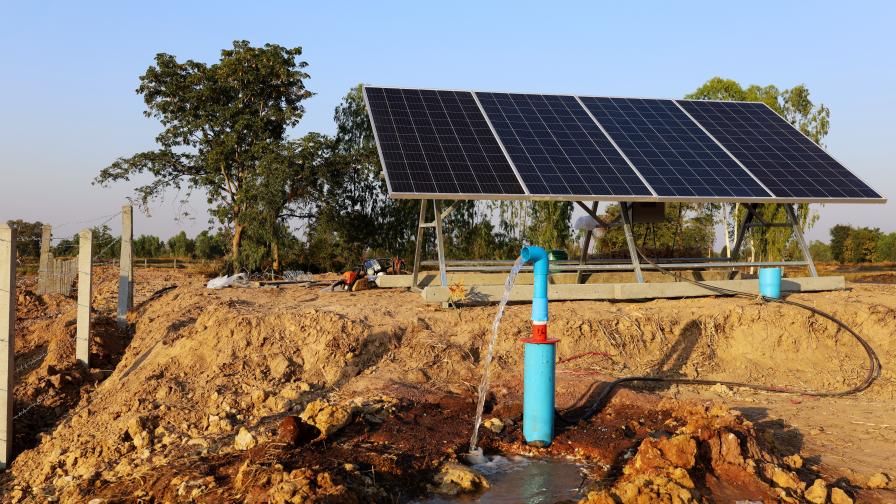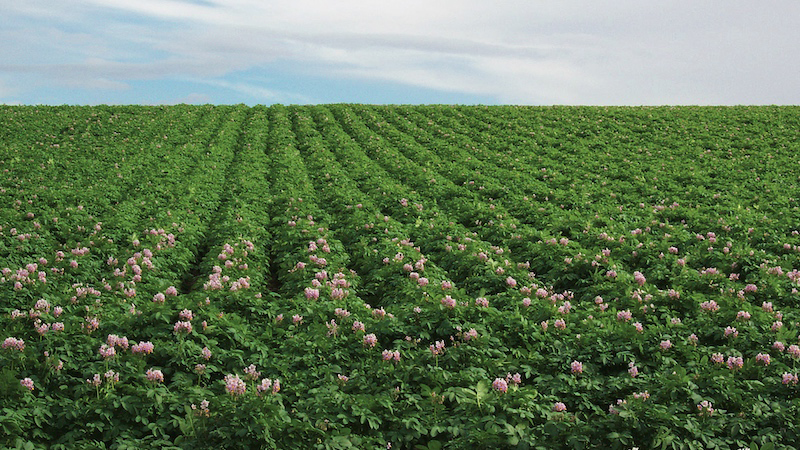Why California Fruit Growers Should Tap Into the State Water Efficiency and Enhancement Program
Growers in California can once again expect the state to provide financial assistance to implement specified irrigation systems. The State Water Efficiency and Enhancement Program (SWEEP) upholds two primary goals of the California Department of Food and Agriculture (CDFA): increase water use efficiency and reduce greenhouse gas (GHG) emissions.
“We do not have enough water in California for everyone that lives here and all the activities we do,” Ian Vietti, Government Funding Manager with farm cooperative Innovative Ag Services, said in a webinar sponsored by Tule Technologies. “Farming and ecological uses are kind of always tussling over what supplies we have. So, part of the reason that CDFA is incentivizing SWEEP is water conservation — to help us get more crop per drop.”
As for GHG emissions, “the state of California is all in on climate change,” Vietti says. “One of the major energy usages in farming, in relation to irrigation, is, of course, your pumping energy.”
FIRST COME, FIRST SERVED
To date, CDFA has awarded 1,130 projects covering 168,000 acres. More than $123 million has been granted, with $70 million in matching funds being contributed by awardees.
With the 2021-2022 fiscal year having ended June 30, the 2022-2023 grant application process is projected to open in November, according to Vietti. Once it does, growers are encouraged to act quickly rather than wait the duration of the 60-day application window.
“One of the No. 1 reasons I see people’s applications not get accepted is basically they wait until the last minute,” Vietti says. “They put together an application, and it’s just a little too late. They’re trying to rush.”
Instead, growers should be ready to apply before the application window opens.
“If you wait until it opens up, you’re way behind the eight ball,” Vietti says. “Unfortunately, it takes time to meet with people and figure out what you want to do. So the best time to start planning conservation or improvements to your farm is now.”
Growers should seek guidance from an irrigation company to determine a concept before the bidding process. Their wells and pumps should be tested.
“This is another thing I see a lot of people struggle with,” Vietti says. “The SWEEP application, and specifically the greenhouse gas calculator, requires you to have well efficiencies on all pumps connected to the system for the target area; the parcels you’re trying to apply for. That includes your booster pumps and lift pumps.”

Pumping water with solar cells. The panels receive and convert solar energy into electric energy using submersible pumps for farms.
Photo by Franco Kanin
WHAT CAN BE FUNDED
If something saves water or pumping energy, it is basically eligible under the State Water Efficiency and Enhancement Program, according to Vietti, who details six such systems or components:
Irrigation systems: “Converting from flood systems to drip irrigation systems; from high-pressure irrigation systems to low-pressure irrigation systems; those are all kind of the primary things we see people apply for.”
Pumps/variable frequency drives (VFDs): “If you have an inefficient pump and need to have it refurbished, you are not allowed to lower your wells, but if you have a low-efficiency pump and want to increase the efficiency by putting updated bowls or converting from production to pressure bowls because you put in a pressurized system or added a VFD — that can be funded as well.”
Pump conversions: “Going from a diesel or natural gas well to an electric well is something that is looked favorably on. They also allow you to cost share a portion of the [Pacific Gas and Electric Company] hookup or [Southern California Edison] hookup, so it can help offset that cost as well.”
Automation components: “Automation components, like HotSpot Ag offers, are all part of things that can be added to a system to increase its efficiency. A lot of times, those use VFDs, and VFDs usually show a savings in greenhouse gases because they increase your pumping efficiency.”
Service fees: “They also allow two years of service fees for things like soil moisture sensors and [evapotranspiration] data from sensors like Tule’s.”
Solar systems: “They also allow solar systems to help offset pumping and use. So if you have a small 10-horsepower pump, you certainly can apply and get a solar field large enough to offset your pumping.”
BIDDING PROCESS
SWEEP applicants last year were limited to $200,000 per tax ID per application. There was no match required, and they had a $600,000 tax ID lifetime limit.
“That’s kind of important to note,” Vietti says. “If you’re applying under an LLC vs. your own social security number, each of those have a lifetime limit of $600,000, and you can only do one application per tax ID. But if you have multiple entities or are involved in multiple farms, you could potentially have more than one application.”
Upon entering the bidding process, growers should consider what Vietti calls the “20% factor.”
“When I’m working with an irrigation company, I ask them to bid with a 20% price increase in the actual bid simply because, having done this for several years, the delay between the time the grant application is submitted and the time it is awarded and allowed to be executed, we typically see about a 20% cost increase,” Vietti says.
“So, factoring that in at the beginning, if you say, ‘Hey, I don’t want to come out of pocket; I only want to spend the $200,000,’ really you need to plan for your project right now to be between $160,000 and $170,000. Because by the time you’re awarded and you actually get to install, that price may increase, and you don’t want a surprise $30,000 or $40,000 bill.”










